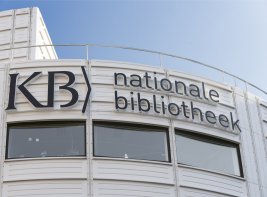The KB's collections contain millions of publications, such as books, newspapers and magazines. To make them easily accessible, they are described according to a set pattern. These descriptions of publications are called 'medadata'. To ensure that this data is optimally usable for researchers and services, the KB offers data in the form of linked data. This is one of our areas of expertise.
What are linked data?
Linked data are metadata that have been structured according to specific standards, allowing computers to establish correlations between data contained in different sets. The following example explains how this works.
- Dataset 1 contains the fact that the writer Karel van het Reve was professor of Slavic Literature at Leiden University from 1957 to 1983.
- Dataset 2 contains the titles and publication dates of publications written by Karel van het Reve.
- Dataset 3 contains the creation dates of preserved items of correspondence written by Karel van het Reve.
- If these are linked data, the computer can establish relationships between the different data. This makes it easier for researchers to determine which letters and publications Karel van het Reve wrote while he taught at Leiden University, for example, or the items of correspondence that he wrote while working on a specific book, article or essay.
Can we discover more about the KB's collections by studying the metadata of publications? And how does linked data help with that? It is not only the KB's collections themselves that are valuable: the metadata about those collections have a lot of value as well. This metadata consists of descriptions of the publications. To make it into linked data, we structure the metadata in such a way that they can be combined with other data. Different collections of data can be linked together if they have been structured in the same way, using the same standards. We use the standards of schema.org and the Library Reference Model of the International Federation of Library Associations and Institutions (IFLA LRM).
To make it easy to adapt metadata to those standards, we developed a tool called the RDA entity finder. In addition to that, we also offer as much of our own linked data as possible. Naturally, those data are free to use and reuse (linked open data) and are structured according to IFLA LRM where possible.
Result: linked data make metadata accessible for everyone
Linked open data can be shared and reused via internet pages, and can be automated using computers. This makes it easier for everyone to search the data and enables services such as Wikidata to make convenient use of the metadata provided by the KB.
All organisations that provide linked open data and use the same standard are actually working together to create one big and easily searchable database. The KB wants to help make that database better and more advantageous by adding its extensive and diverse collection of metadata to it.
Curious about our linked data?
We offer our linked data at data.bibliotheken.nl. To create linked data using these two standards, we are working on a description of guidelines, rules and examples for using schema.org and the IFLA LRM model.


